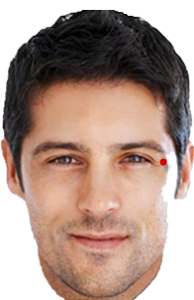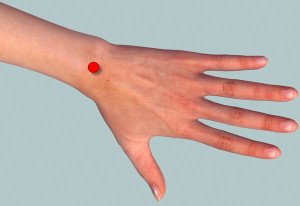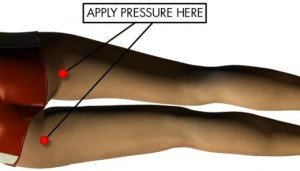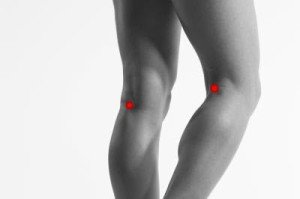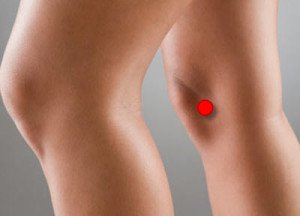You Must Know the Differences between a Heart Attack, Cardiac Arrest and Stroke

Most people are using these 3 terms interchangeably, “heart attack”, “cardiac arrest” and “stroke. Well that’s a mistake, since though they are all connected to heart, they have different reasons for appearing, as well as different symptoms and effects on the body.
Being able to distinguish these terms can be of vital importance in seeking the proper treatment, as well as helping someone with one of these conditions.
Read our post to understand what each of these conditions mean, what their symptoms are and how to properly react upon facing with them.
What Each of These Conditions Is
Heart Attack
It’s a circulation disorder.
When the flow of the blood rich with oxygen is blocked to a certain part of the heart muscle, if not restored causes dying of the muscle, thus resulting with heart attack.
If a person has a heart attack, his/her heart continues beating.
Cardiac Arrest
It’s an “electrical” disorder.
If your heart’s electrical activity undergoes chaos, it’ll result with irregular heart beating, and immediate stop of the blood pumping throughout the body. This condition is cardiac arrest.
In this heart condition, the heartbeat stops completely.
Stroke
It’s a brain disorder.
There are three types of stroke:
Schemic stroke:it appears when there’s a blockage of the artery which transports blood rich in oxygen to the brain
Transient ischemic attack (TIA):it’s called a “mini-stroke” and appears when the artery which transports blood to the brain, temporarily stops transporting the blood.
Hemorrhagic stroke: it appears upon rupturing an artery inside brain
Heart Attack Symptoms:
These are the heart attack symptoms which can occur early on and last several days.
Pain in chest (angina): Often characterized as heaviness in the middle of the chest, and confused with indigestion. It can come and go in a matter of minutes.
Aches in the body: pain in the neck, abdomen, back, jaw, and arms, especially the left one.
Lacking of breath and wheezing
Cold sweating
Feeling dizziness and light headedness
Grown anxiety
Coughing
Nausea
You can’t treat these symptoms with home remedies or medications, since they are connected to the heart, and not to the digestive or some other system.
Aches in the body: pain in the neck, abdomen, back, jaw, and arms, especially the left one.
Lacking of breath and wheezing
Cold sweating
Feeling dizziness and light headedness
Grown anxiety
Coughing
Nausea
You can’t treat these symptoms with home remedies or medications, since they are connected to the heart, and not to the digestive or some other system.
Cardiac Arrest Symptoms:
In some cases, several minutes before a person experiences a cardiac arrest, s/he can feel similar symptoms to those of a heart attack
Fainting
Blackout
Pain in the chest
Lacking of breath
Weakness
Extreme palpitation
But in most cases of a cardiac arrest, the person will experience:
Loss of breath
Lack of responsiveness
Sudden collapse
Loss of pulse
These symptoms are appearing suddenly and are often resulting in instant death.
Person who has suffered a heart attack has a greater risk of experiencing a cardiac arrest.
In some cases, several minutes before a person experiences a cardiac arrest, s/he can feel similar symptoms to those of a heart attack
Fainting
Blackout
Pain in the chest
Lacking of breath
Weakness
Extreme palpitation
But in most cases of a cardiac arrest, the person will experience:
Loss of breath
Lack of responsiveness
Sudden collapse
Loss of pulse
These symptoms are appearing suddenly and are often resulting in instant death.
Person who has suffered a heart attack has a greater risk of experiencing a cardiac arrest.
Stroke Symptoms:
Mental confusion, like forgetting names, places, and inability to follow a conversation
Disrupted speech
Numbness of paralysis of the face, arm or leg, especially on one side
Walking inability, accompanied with dizziness
Blurred vision, and double seeing
Headaches and vomiting
Excessive sweating
Nausea
Transient ischemic attack (TIA)
Mental confusion, like forgetting names, places, and inability to follow a conversation
Disrupted speech
Numbness of paralysis of the face, arm or leg, especially on one side
Walking inability, accompanied with dizziness
Blurred vision, and double seeing
Headaches and vomiting
Excessive sweating
Nausea
Transient ischemic attack (TIA)



















 oint 3– This point is located at the outer tip of the eyebrow.
oint 3– This point is located at the outer tip of the eyebrow.



